 Back to selection
Back to selection
25 NEW FACES – PART 2
Jason Byrne
When we caught up with filmmaker Jason Byrne to include him in this year’s “25,” it was via e-mail from Tanzania. At the sa me time Byrne’s hypnotic experimental documentary Scrap Vessel winds its way along the festival circuit, he is working as an audio/visual archivist for the United Nations Criminal Tribunal for Rwanda. “Living in East Africa for the last two years has been a deeply rich experience, and this job has been fascinating but psychologically difficult at times, especially when listening to the many graphically explained testimonies from witnesses to the genocide,” he writes.
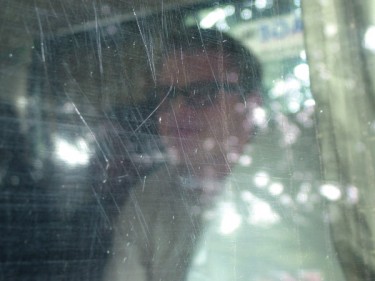
Byrne has worked previously as an archivist in Los Angeles, and he also graduated from the Film/Video Masters program at CalArts, where he “received a lot of help in understanding space and time from filmmakers Betzy Bromberg and James Benning.” His understanding of the relationship between film practice and historical memory informed Scrap Vessel, which was his thesis project at CalArts. The film takes place on the final voyage of a former Chinese-owned freighter ship on its way to the breaking yards of Chittagong, Bangladesh. As he explains, “I shot this film in the frame of mind of being alienated from the rest of the crew and of trying to capture my initial understanding of the new environment. Maybe the film is the reverse of an anthropological study. Once I began editing, I realized I also wanted the film to reflect the memories I had aboard the ship, which I created by manipulating shots to give them a dreamlike image. By manipulation, I was able to capture a stronger state of sublime (technically by building heavy contrast by rephotographing the print over and over again), along with sound of Albert Ortega’s haunted-like score, to capture the traces of memory that leave me continuously with the surreal vision of being aboard the vessel. Also, I was interested in creating a similar haunted feeling with the use of the dusty archival material left over from the former mainland Chinese crew, which is interspersed throughout the film, that includes 16mm motion pictures of 1970s/’80s Chinese communist message films, an audio-cassette mixtape and a roll of still photo negatives of the former crew. From my archival past (and present), as well as creating a still ‘living’ vision of my travel, this is a deeply personal film.”
As he works in Africa, Byrne, who cites as his filmmaking influences “Vertov, Eisenstein, Benning, Fassbinder, Allan Sekula’s writing, Edmund Burke on the sublime, and the funny parts in Chris Marker’s films,” is at work on his next project, a film about Mozambican contract workers sent to East Germany in the 1980s who have been fighting for 20 years for the pensions they were promised. “This is a story about who these workers are through their own interviews,” Byrne writes. “Stylistically, the film will have many relations to Scrap Vessel by use of archival elements, such as old photos and video/film. The dialogue from the contract workers is about the strangeness of arriving, working and living in East Germany, and their situation returning back to Mozambique with no money and being in the middle of a brutal civil war.” — Scott Macaulay
Contact: scrapvessel.com
Trieste Kelly Dunn
A number of new talents have come from the University of North Carolina School of the Arts in recent years, and one recurring theme has been the face of Trieste Kelly Dunn.
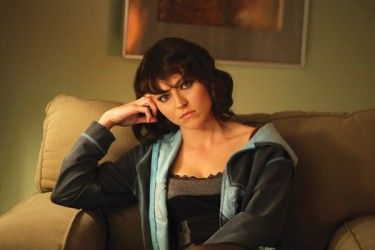
Aaron Katz’s Cold Weather and Brett Haley’s The New Year made significant festival splashes this year, and beach-party styled Vacation!, by Zach Clark, seems positioned to do the same. Despite very different tones and directing styles, Dunn is each film’s center, and she makes perfect sense in every movie. “In college, the professors used to talk about knowing what play you’re in,” says Dunn. “You do Ibsen, French farce, Shakespeare — the good thing about starting with a conservatory before you jump into work is that you can try out so many different styles.”
That jump into work was not the easiest of awakenings; it took months of auditioning before she got her first job. “People don’t know you, and they’re not able to take chances — you usually know that the part you’re auditioning for has already been offered to someone bigger,” she says, uncomplaining but resigned to the hard knocks her career choice brought upon her. Things took off for her first in TV, with successful supporting parts on Canterbury’s Law, Bored to Death and Fringe, along with a plum role in Paul Greengrass’s United 93. But it was her N.C. family that has renewed her faith.
“I really like TV, but it’s so incredibly fast.” Starring in films has given her the space to shape a whole character. “[With these UNCSA directors], we all speak the same language, and we’re peers, so they ‘get it.’ They have an awareness that if actors feel safe and not rushed, you’ll do better work together. I think if you’re really trying to mine the most intricate human behavior, you need to spend some time on it.”
After a raucous festival tour, Dunn has settled in Los Angeles, where, at the 2010 Los Angeles Film Festival, her performance in The New Year scored her stellar reviews. At indieWIRE, Todd McCarthy wrote of Dunn and the film’s low-key drama: “Of course, you don’t — or shouldn’t — make a film like this, in which the camera remains fixated on one actor the way a cat stalks a bird, unless you have a performer of sufficient luminosity and ability to carry it, especially when the story is entirely ordinary. Fortunately, Dunn stands up to the continual scrutiny… An open-faced, clear-eyed, dark-haired girl next door, Dunn is very good indeed….” Of her future plans, she hopes to continue the type of rewarding collaborations she’s had the good fortune to experience the past year: “Now I know how good it can be to work on a movie with really great people, so I want to do more of that.” — Alicia Van Couvering
Contact: Emily Gerson Saines at Brookside Artist Management: (212) 489-4929
Sean Durkin
After living in London as a child, Sean Durkin spent his final year before moving back to the States in the English countryside. For the then 11 year old, the sprawling, beautiful landscape was a world away from the hectic streets of the city. But when night came, so did dark seclusion and feelings of fear and anxiety — feelings heightened by the scary movies Sean and his mother would spend their evenings watching.
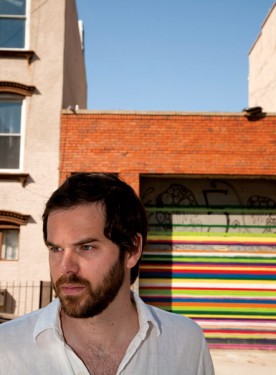
“As a child I built this irrational fear of home invasion,” Durkin, 28, recalls. “All of these unsolved mysteries seemed to always happen in Southern California, so for a kid watching in England it looked like Southern California was the scariest place on Earth.”
His fear later turned into a driving fascination with one of Southern California’s most infamous home invasions, the Sharon Tate murders, and the people responsible, the Manson family. His interest didn’t fade when he began attending NYU in 2002 to become a filmmaker. “I didn’t want to do something on the Manson family, but I wanted to make a film about lost people trying to find their place who get manipulated beyond their control.” And while Durkin has been busy producing and running the production company Borderline Films with fellow NYU classmates Josh Mond and Antonio Campos (they’re responsible for Buy It Now and Afterschool, both directed by Campos, as well as Alistair Banks Griffin’s Two Gates of Sleep), he has continued to research cults. Finally, last year he began moving forward. But with financing not yet in place and the screenplay still not to his liking, Durkin postponed his debut feature and decided instead to make the short Mary Last Seen.
The 12-minute short explores the initiation a person unwittingly goes through before they are introduced into a cult. Durkin highlights this through the story of Mary (Alexia Rasmussen) and her boyfriend (Brady Corbet) as they take a drive into the woods of upstate New York. After a string of bizarre incidents, they show up on a farm where Mary is welcomed with open arms. When the boyfriend leaves, we realize that Mary has been inducted into a cult — or, as the open ending leaves us free to imagine, worse.
“I made Mary Last Seen to have something to send out with the feature script,” Durkin admits. But after taking a second pass at the edit he decided to submit it to Sundance, which accepted the film. It went on to play the 2010 Cannes Directors’ Fortnight, where it won the section’s short film prize. Festivalgoers have raved about the short’s creepy ambiguity and beautiful camerawork, which includes a gorgeous shot of Mary and her boyfriend jumping off a highway overpass, the camera’s POV taken from the water’s surface where they land. “It’s so gratifying,” says Durkin of the reaction. “At times you’re broke and you ask yourself what it’s all for and then something like this happens. It’s inspiring.”
Durkin is now focused back on the feature, titled Martha Marcy May Marlene, which he’s working on at this year’s Sundance Labs. The film returns to the farm shown in Mary Last Seen, but follows another young girl, Martha, who after escaping lives with her sister though she’s still haunted by memories of her time there. (Ted Hope has signed on to executive produce.) “I want the story to be grounded in this family drama, which I think everyone can relate to, but also get into these subjective paranoid aspects from her past, which audiences aren’t used to seeing.” — Jason Guerrasio
Contact: Melissa Breaux at Washington Square Arts: (323) 850-2782; David Flynn at UTA: (310) 273-6700
Rebecca Richman Cohen
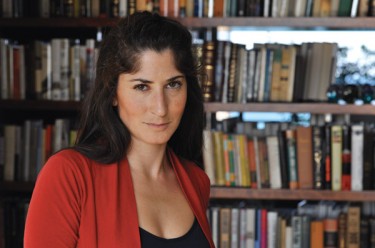
Early on in Rebecca Richman Cohen’s career in film she worked in the edit suites of Michael Moore’s Fahrenheit 911 as an assistant editor. But when the movie was over, rather than pursue film through further editorial work, she decided to go to law school. “I was ready to sink my teeth into something concrete,” she says. “Going to Harvard Law School was a tough decision because I loved film. But I felt that the law would ground me in social issues and add something substantive if I decided to return to film.” While in law school she worked one summer with public defenders in the Bronx. “I got pretty radicalized about public defense,” she says. “You have to find empathy for someone in a difficult situation who may have made bad choices. You have to understand their circumstances and see the flaws in a system that requires [public defenders] to act as advocates for them. I wondered if that same philosophy would hold true on the international level.”
Cohen got her chance to explore international law the following summer when she worked as a legal intern at the Special Court for Sierra Leone, “the world’s first international war crimes ‘hybrid tribunal’ created jointly by the United Nations and the government of Sierra Leone.” She witnessed the trial of Issa Sesay, a rebel leader accused, among other charges, of allowing his men to rape, conscript underage youth as fighters and amputate the limbs of civilians during the country’s civil war. This trial became the basis for Cohen’s extraordinary debut documentary feature, War Don Don (translated, “War Is Over”). “It’s my retelling of my summer vacation,” Cohen jokes. And while Cohen got to know Sesay’s defense team quite well during her summer in Sierra Leone, the finished film looks at this complex subject from multiple angles and with extraordinary intelligence and nuance. In addition to the courtroom drama, it explores larger questions relating to the attempt to use Western judicial institutions to heal the trauma of an African country and build the bedrock of a future functioning civil society.
To help make War Don Don, Cohen, who was born in Evanston, Ill., and now lives in Brooklyn, turned to her colleagues from Fahrenheit 911. The film is masterfully shot, largely by Nadia Hallgren, and brilliantly edited by Francisco Bello. “We were all the underlings on Fahrenheit 911, we all came up together, and we were all up for an adventure,” she says. During postproduction, Cohen honed her edit by soliciting feedback from human-rights organizations. After receiving initial “scathing feedback,” she went back to work, trying “to find the fine balance where you can see that there are flaws in the legal process without making a film that exculpates a war criminal of his responsibility.”
The result has been a film that has been racking up awards on the documentary circuit — a Special Jury award at SXSW, the Cinereach Award at the Human Rights Watch festival, and the Karen Schmeer Award for Documentary Editing at IFF Boston — as well as praise from its subjects, including the prosecution, Issa’s family and viewers in Sierra Leone. It will be broadcast on HBO September 29.
Next for Cohen is another documentary dealing with the law. “I’m still trying to justify the three years I spent in law school,” Cohen says. “I didn’t take the bar, but I’ve decided my films will be law-based. I think War Don Don had incredible characters, but the [movie] was driven by [the story of] an institution. For the next one, which will also be about the gray areas of the law, I’m going to find something a little more character-focused.” — S.M.
Contact: wardondonfilm.com; info at racinghorsepro dot com
Julius Onah
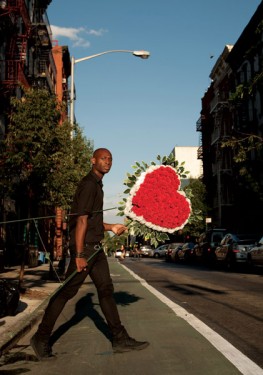
Writer-director Julius Onah describes his debut feature, The Girl Is In Trouble, shooting this summer on the streets of New York City, as a film that takes “the various archetypes of film noir and marries them to the diversity of the Lower East Side.” There’s a European femme fatale, a downtown denizen in over his head, a murder victim, a few thugs and, of course, a setting steeped in the history of Gotham’s immigrant culture. Explaining the appeal of his setting, Onah, who was born in Nigeria and grew up in the Philippines and Arlington, Va., says, “The Lower East Side was a meeting point for freed African-American slaves and the destination for German immigrants, Dominican immigrants and many others. I’m from an immigrant family myself and am attracted in all my work to stories that will resonate internationally, in different cultures.”
In addition to having researched the history of the Lower East Side — recalling the work of Richard Price, Onah’s script weaves bits of that history throughout its narrative — Onah knows the neighborhood firsthand because he lives there and has worked in its club scene. Quite organically, then, he has given his project a transmedia element. “I have a lot of friends who d.j. and promote [parties],” he says. “I’ve written some of these real people, like Nicky Digital, into the movie and made them part of the story. They’ll run little bits of viral footage on their photo blogs. On top of that, the film is told in 10 chapters — I liken it to a music album. Each chapter is a song, its own experience. We may leak one of our chapters [online as a promotion].”
Of course, those 10 10-minute chapters are the perfect length for other forms of distribution, as the Wesleyan University theater-program graduate is well aware. His previous films include shorts shot on and for mobile phones, like Goodbye Chicken, Farewell Goat, which premiered this summer at the Los Angeles Film Festival. Other shorts include The Boundary, a border-crossing thriller selected by Amnesty International as one of its “Movies that Matter,” and the Berlin-premiering doc short Szmolinsky.
Among his many jobs and positions — Onah has done everything from the Tribeca All Access program to the Berlin Talent Campus to the obligatory gig at Kim’s Video — interned with Spike Lee, who has since come on board The Girl Is In Trouble as an executive producer. Onah, who is still attending the Graduate Film Program at NYU (The Girl Is In Trouble is actually his thesis film), developed the script in weekly meetings with Lee, who is a professor there. “But it wasn’t until I could articulate to him how I could make the film on not just a creative level but a technical and production one that he came on board,” Onah says. Lee’s name helped raise finance and attract cast, Onah says, “but mostly it was just a lot of hunger. People responded to the script and my shorts, which reflect my ability to tell a story with any number of resources, from a 35mm rig to a cell phone.” — S.M.
Contact: juliusonah.com
